inside
The Green Mile
In the new home of a young Tacloban public figure and his family, going the extra green miles brings in a breath of fresh air and the little theatrical drama they need for a great start.

In the new home of a young Tacloban public figure and his family, going the extra green miles brings in a breath of fresh air and the little theatrical drama they need for a great start.

DRIVING INTO THE Yaokasin compound at dusk in Tacloban City, Leyte, one can’t help but shift their attention to the dramatically-lit house of Councilor Jerry “Sambo” Yaokasin. Immediately, from the subtle asymmetrical PVC and aluminium roofing, it was clear that this was done by Architect James Jao, and that this was going to be another eco-blueprint, and a first of its kind in this city.


But before anything else, let’s get some things right. Going “green” doesn’t always and necessarily mean covering your house with solar panels, or spending a fortune, or even growing your own organic garden. It can also mean simply taking measures and initiatives by using products, materials and design schemes that encourage less energy use, and are health-friendly.


This 600-square-meter house is one of two residential houses that rest in this 3,000-square-meter compound beside the Kankabatok Lake. Just like the man of the house who is a father, a businessman, a pastor, and a city councilor, the home is multi-faceted: it incorporates eco-friendly materials and stratagem with modern design. This was going to be an eco-home that not only minimized energy consumption but maximized comfort.

The homeowners were very hands on with the design which took about three months to plan but the construction was not completed until two years. Kathleen, the lady of the house, is the Cebu link, originally being from Lahug. Architect James Jao was recommended by her close friend, Jane Ong, of much-loved Cebu pastry shop Leona fame, and the rest, as they say, is history.


The driveway alone is already eco-friendly. The pavers brick is porous and sturdy. It absorbs the moisture and is therefor very low maintenance. A head turner early on in the entrance is the totem pole-like structure in the fore-garden. Is it an abstract sculpture or just a fossilized wood-plank? “Carved by nature,” Architect Jao exclaimed of the drift-wood Councilor Yaokasin had secured from a trip to the nearby provinces. The plank-cum-sculpture adds the perfect touch to the landscape done by Oscar Villanueva.

Taking a small step back, the architect’s “interpenetrating” technique allows some flora to break the solidity of the house’s design, adding life to the structure itself. Still from a distance one can see that very basic Feng-shui was applied to the structure, but so elementary as it was purely out of logic: the main door faces the east because to the west is a wall to mark the property’s boundary; and all downspouts were positioned to be against this same wall so that no water would obstruct the pathways when it rains and thus the rain water is also easily captured (rain water harvesting) and lightly-filtered to be used for household work like laundry or washing cars.

Coming closer to the house, the exterior walls are sandstone tiles from Kaufman in Manila. The solid hardwood double door opens into the foyer and also to the breezeway, a narrow path that leads to the atrium, where another drift-wood-cum-art piece rests. The breezeway distances the rest of the living spaces from the most exterior glass wall. It’s not just to minimize the heat but also to allow a little more privacy while still allowing the glass to let in as much natural light as possible. Architect Jao used low-E (Emissivity) glass, which keeps in the cool and in effect lessens the air-conditioning required. As for the air conditioners, the family opted for Samsung’s inverter air conditioners. Sure they might be a little heavier on the pocket, but they consume and cost less per kilowatt hour. Going green is about encouraging lower maintenance and in effect, later but bigger, savings.

A whole gamut of other energy conserving techniques were applied to the interiors including the floor tiling, which uses Inalco Slimmker tiles, brought in from their Cebu supplier. What makes these tiles eco-friendly is that they are slimmer, and therefore were produced with seventy percent less of the manufacturing carbon footprint without compromising their durability.
 Where there is no low-E glass there is tile, and where there is no tile there is low-VOC paint (a non-toxic, fast-drying paint), “Healthy Home” paint, from Boysen Paints. It is perfect for families with small children. Where there is no paint there is wall-art, a James Jao interior signature. The elegant floor-to-ceiling wall-art in the Yaokasins’ living room is of locally-sourced tigerwood: wood bricks shaped by the architect into an abstraction of a mother’s womb.
Where there is no low-E glass there is tile, and where there is no tile there is low-VOC paint (a non-toxic, fast-drying paint), “Healthy Home” paint, from Boysen Paints. It is perfect for families with small children. Where there is no paint there is wall-art, a James Jao interior signature. The elegant floor-to-ceiling wall-art in the Yaokasins’ living room is of locally-sourced tigerwood: wood bricks shaped by the architect into an abstraction of a mother’s womb.

Lighting was also a key element of the overall design, something that the architect is also very particular with. His background in stage design and lighting–having been mentored by National Artist for Theatre, Rolando Tinio, and CCP’s Teddy Hilado, in the mid to late 80’s–makes Architect Jao very passionate about dramatic lighting. “Because it’s all about drama,” he mustered. “Everything is basically reflected light, except of course, in the dining and foyer areas, where you need to see everything.” All the lighting equipment was secured from Megaman, distributed by Cebu Home and Builders. The up-light in the living room, for example, is a metal-halide, by Endo from Licht and Design. The architect used this instead of the usual chandelier because of its low-maintenance and ambient lighting effect.

The truth is, a green home is more expensive to build, with twenty percent more cost, explained Architect Jao. Cutting costs and corners in design is not what going green is about, but instead it is in taking of such measures that will, in the long run, significantly reduce energy consumption and house bills, and this will surely make the neighbors green with envy.
inside
Butch Carungay’s 50th in Neverland

By Emmanuel Hamoy
Cebu’s glitterati came out in full force for Butch Carungay’s 50th birthday bash at EdenClub. It was a fun-filled night overflowing with Pol Roger, trivia games whilst traipsing the light fantastic.

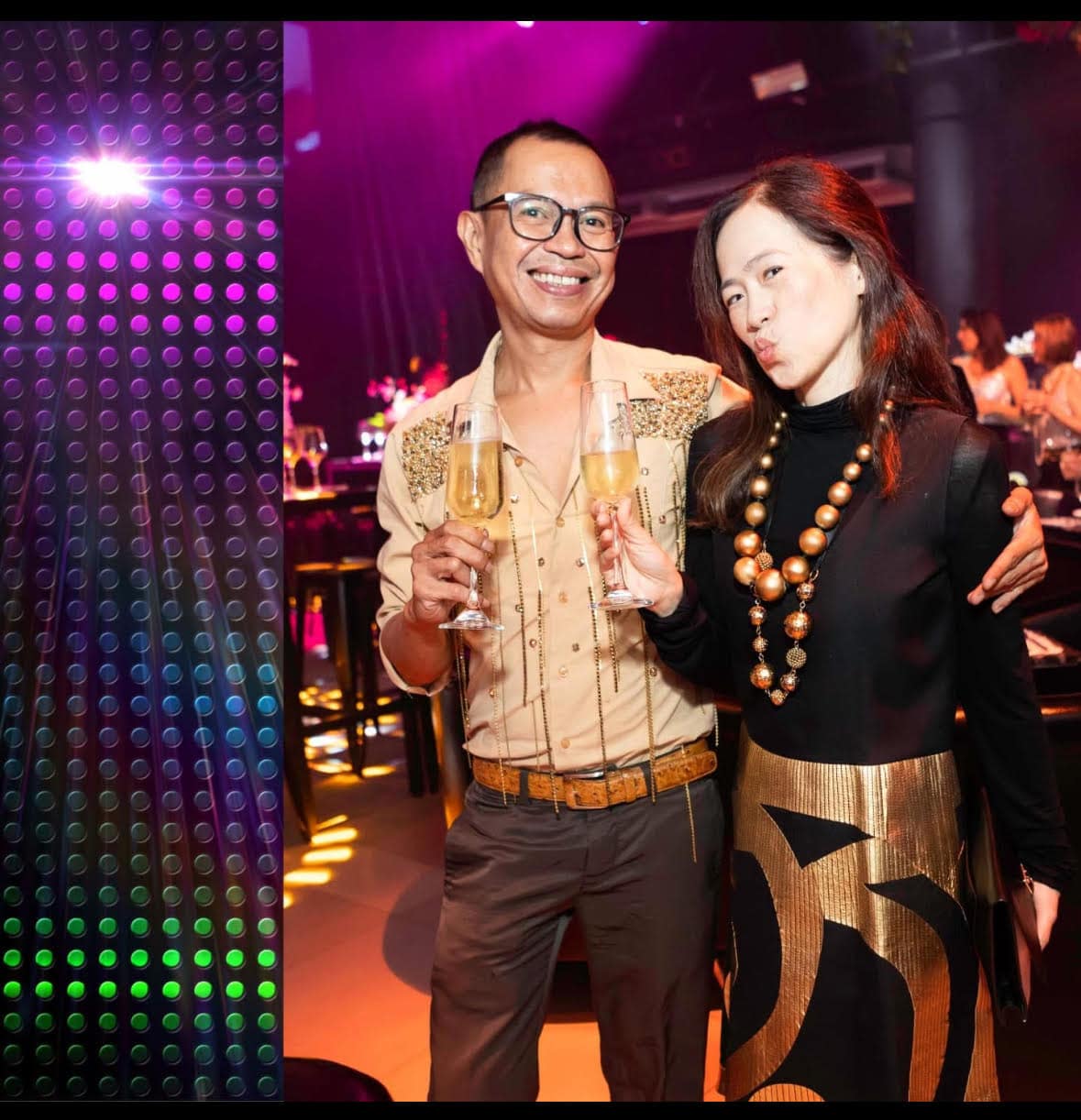
Butch Carungay and Janice Lin.

Gerry Laperal and Lotte Delima-Edwards

Romero Vergara and Oj Hofer

Mary Anne Aboitiz, Christine Pelaez, Tamsin Booth, Frances Siao and June Alegrado

Maris Holopainen and Carlo Cordaro

Janine Taylor and Mary Anne Aboitiz
Fashion
Lucky Colors of 2025: Harness the Energies of Emerald Green & Carmine Red for Success

by Oj Hofer
With the Year of the Wood Snake underway, understanding the significance of lucky colors can help align us with its energetic flow. Rooted in Chinese astrology and Feng Shui, the year’s fortifying shades—emerald green and carmine red—offer mindfulness and good intention attracting luck, and fostering personal growth.
Emerald green, associated with the Wood element, symbolizes renewal, clarity, and inner peace. In the year of the wood snake, its dynamic energies will empower and inspire you, fostering growth, renewal and wise transformations. The hue is ideal for moments of self-reflection, study, or creativity. Wearing or incorporating this shade into your space enhances balance and mental focus.
Carmine red, linked to the Fire element, embodies passion, confidence, and vitality. This year, which according to the Bazi Four Pillars Chart, has a lack of metal, earth and fire elements, it will bring balance and the propitious energies. It’s perfect for professional meetings, decision-making, and moments requiring assertiveness as a splash of red can energize and embolden you throughout the day.
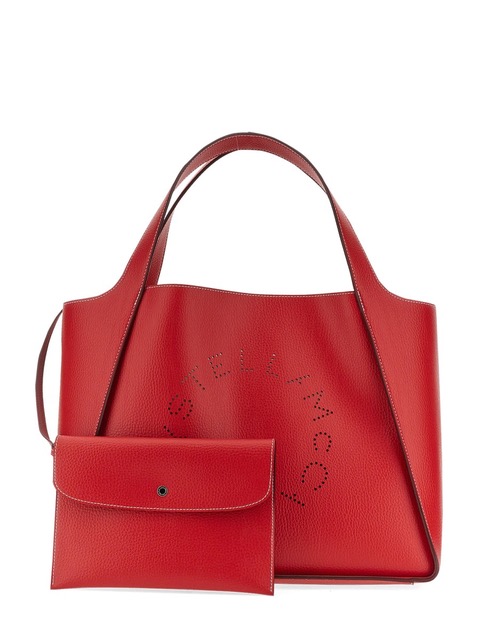
Stella Macartney vegan Leather tote
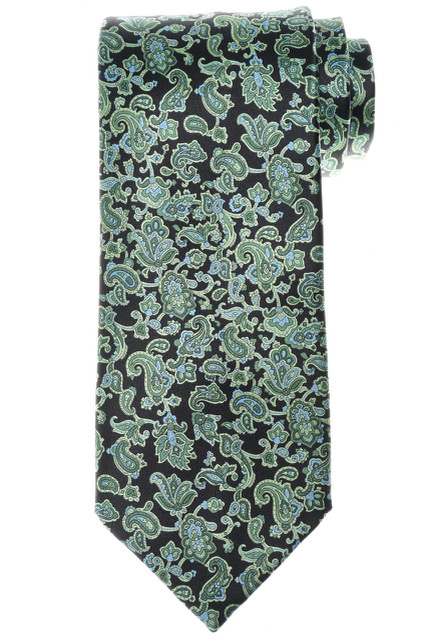
Stefano Ricci silk tie with paisley print
To fully harness their benefits, use these colors in a contemporary, mobile context; through clothing, jewelry, bags and accessories. Alternate between these two potent tints based on your needs. For example, wear green for calmness and clarity when you are going into stressful and mind challenging meetings or appointments. Choose red when you are going into places or situations where you need courage and motivation such as fashion galas, elite socials, prestige affairs, VIP gatherings and so forth.
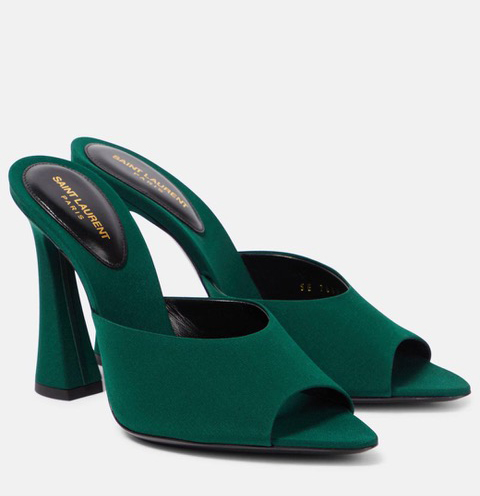
Saint Laurent crepe de chine mules
Optionally, you can also choose to wear these colors inconspicuously in small details, such as a garnet or jade bracelet, or a ruby or emerald pendant and earrings set. Men can wear a burgundy or forest green tie or pocket square, or casual polo shirts with poppies or with botanical prints, or jade and garnet jewelry. Doing so can subtly align your energy with the year’s vibrational flow.

Jan Leslie emerald bracelet
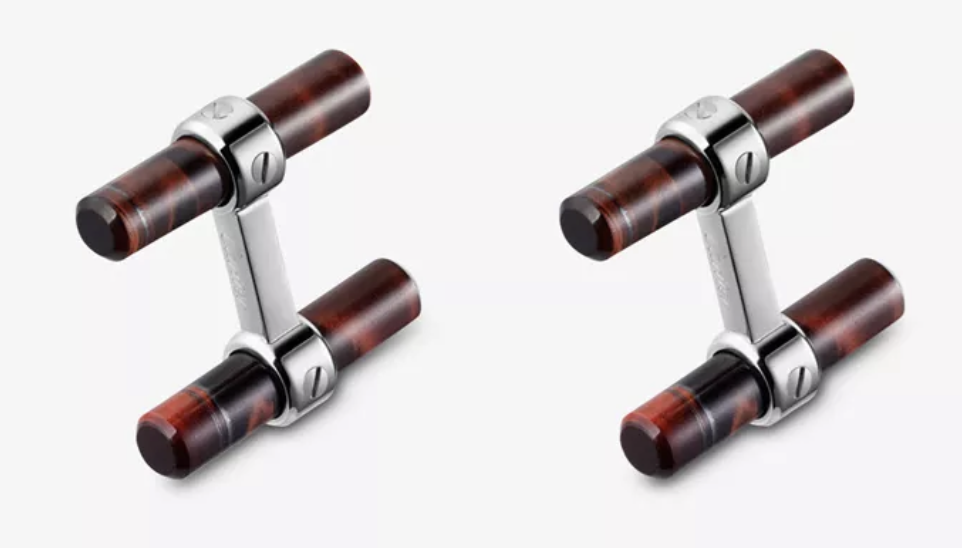
Daily Mood Cuff Links with red tiger’s eye tubes
The use of colors is more than just aesthetic choices or preferential picks. Colors can serve as energetic tools, reminding you of your good intentions and keeping you mindful of you daily motions. Effecting an optimistic mental state in the wearer, they can effectively shield you from negativity while fostering prosperity and emotional balance. Thoughtfully incorporating them into your wardrobe and surroundings ensures that you move through 2025 with confidence and the right intentions.
Embracing emerald green for tranquility and carmine red for strength are intentional, mindful choices that have the power to transform your energy and shape your path forward. May you have the best of luck in navigating through Year of the Snake with harmony, energy, and the power to attract good fortune.
inside
The Java Jive

by Janine Taylor
“Coffee is more than just a drink; it’s something happening. Not as hip, but like an event, a place to be, but not like a location, but somewhere within yourself. It gives you time, but not actual hours or minutes, but a chance to be, like be yourself, and have a second cup.” — Gertrude Stein, American novelist and poet
Coffee, that magic potion in a cup, is our morning savior and the fuel that helps us get through the day. Whether you’re a stickler for the classics and prefer an espresso or need to start your day with some café au lait or a cappuccino, and yes, we live in the tropics, so iced coffee is good too, we all need our caffeine fix!
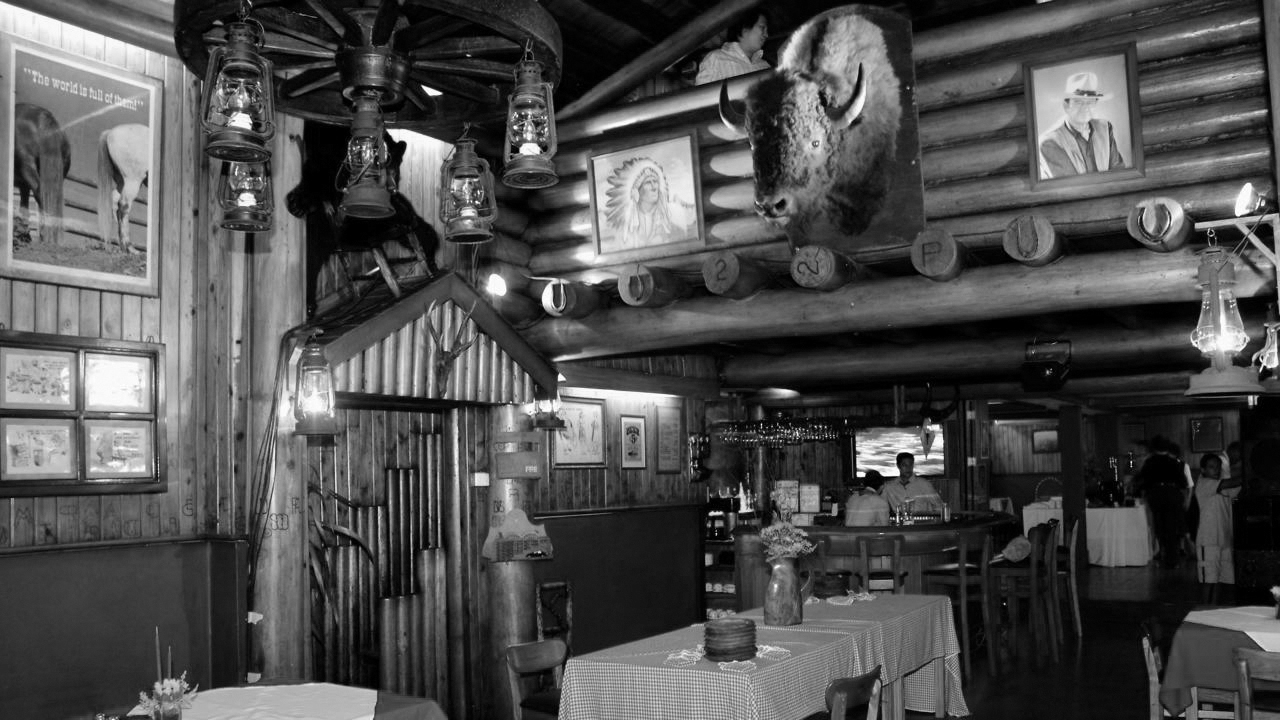
The interiors of Eddie’s Log Cabin
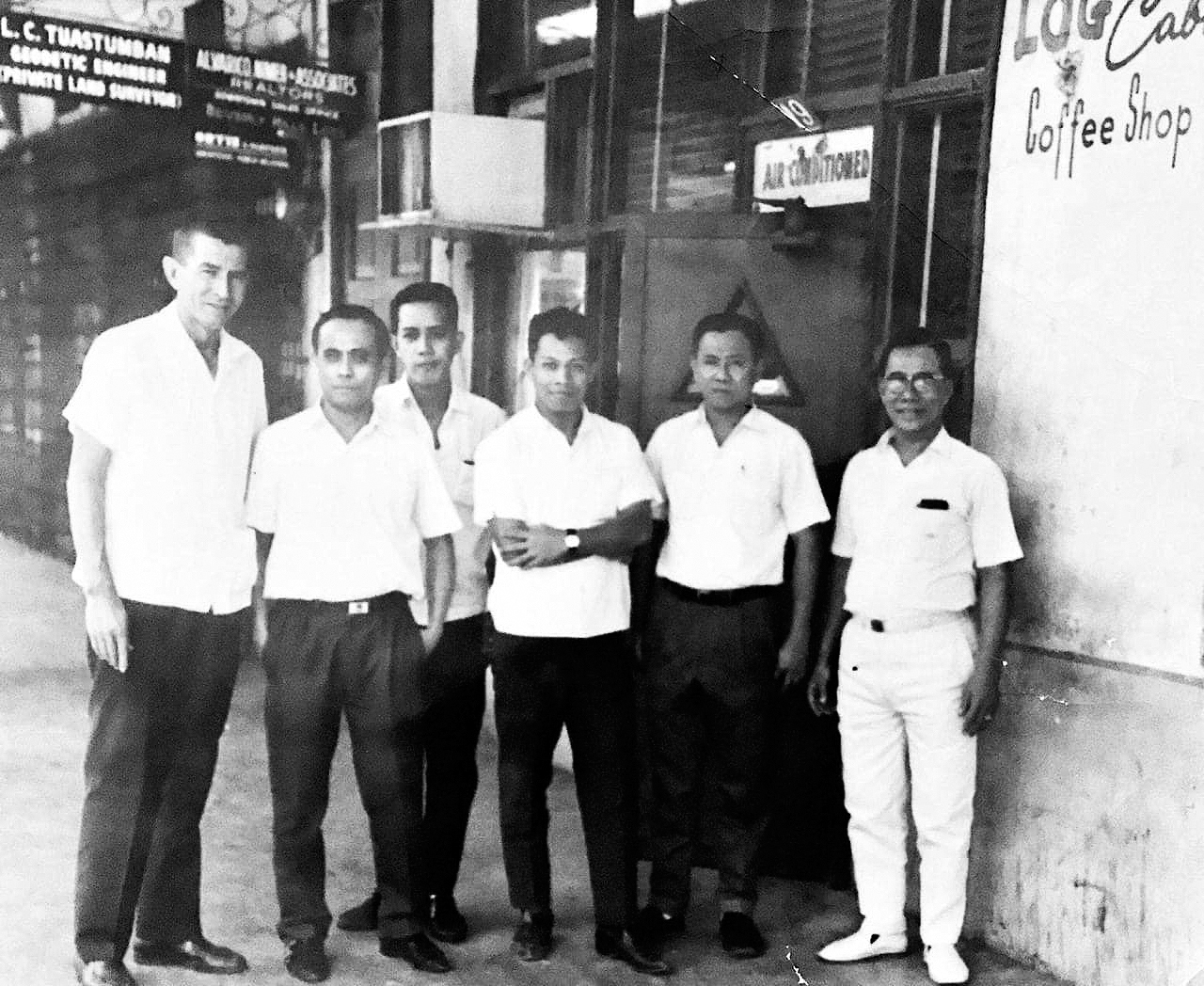
Eddie Woolbright with the original waiters of Eddie’s Log Cabin
Growing up in Cebu decades ago, our earliest memories of coffee were the aroma wafting from the percolator at Eddie’s Log Cabin as soon as you opened the doors. You then stepped in for a cup of Joe and a slice of pie. For our parents’ generation, the ultimate sophistication was a cup of “brewed coffee” because, at home, it was freeze-dried instant coffee with powdered creamer and sugar. Folgers was the coffee of choice. Hyperacidity in a cup when you think about it!
Starbucks descended on our shores in December 1997, and our vocabulary suddenly expanded with venti, grande, and Frappuccino. People were willing to pay exorbitant amounts for a cup of coffee. But more than that, it was an experience. It was, all of a sudden, the place to be seen. It was trendy to have coffee at all hours of the day and not just for breakfast.
Cafes have now become the place to meet up with friends, a venue for meetings, and even a space to work from, and you don’t have to be a digital nomad. You can get caffeinated in air-conditioned comfort with WIFI and a snack.
“Seattle has unleashed this weird phenomenon called the coffee shop on the world. And the coffee shop, thanks to Starbucks, is the place where socially isolated, lonely, needy people gather together to ignore one another.”
— Mark Driscoll, American author
Armed with the adage that you can never have too much caffeine, we spent an afternoon visiting three great joints in the city.
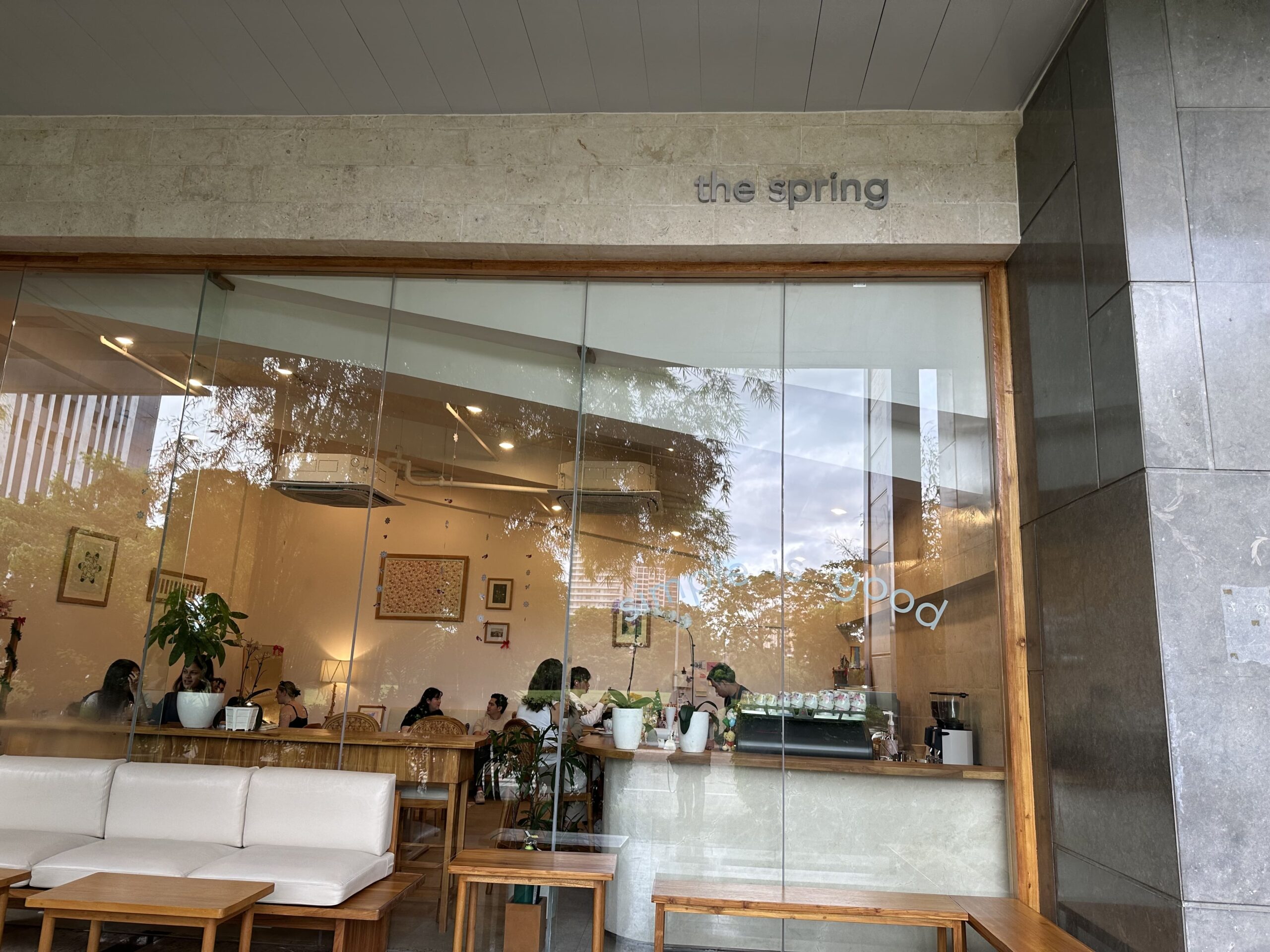
The Spring creates the perfect escape for relaxation and comfort.

Matcha latte
The first stop was The Spring, with Scandinavian-inspired interiors and a super chill vibe. A hands-on young owner, Ange Delas Penas, knows her beans well. She was behind the counter, expertly brewing using filters I had never seen before, which she said she purchased in Taiwan. Her team of trained baristas can also whip up some tasty brews, from a cortado to a matcha latte, my latest addiction.
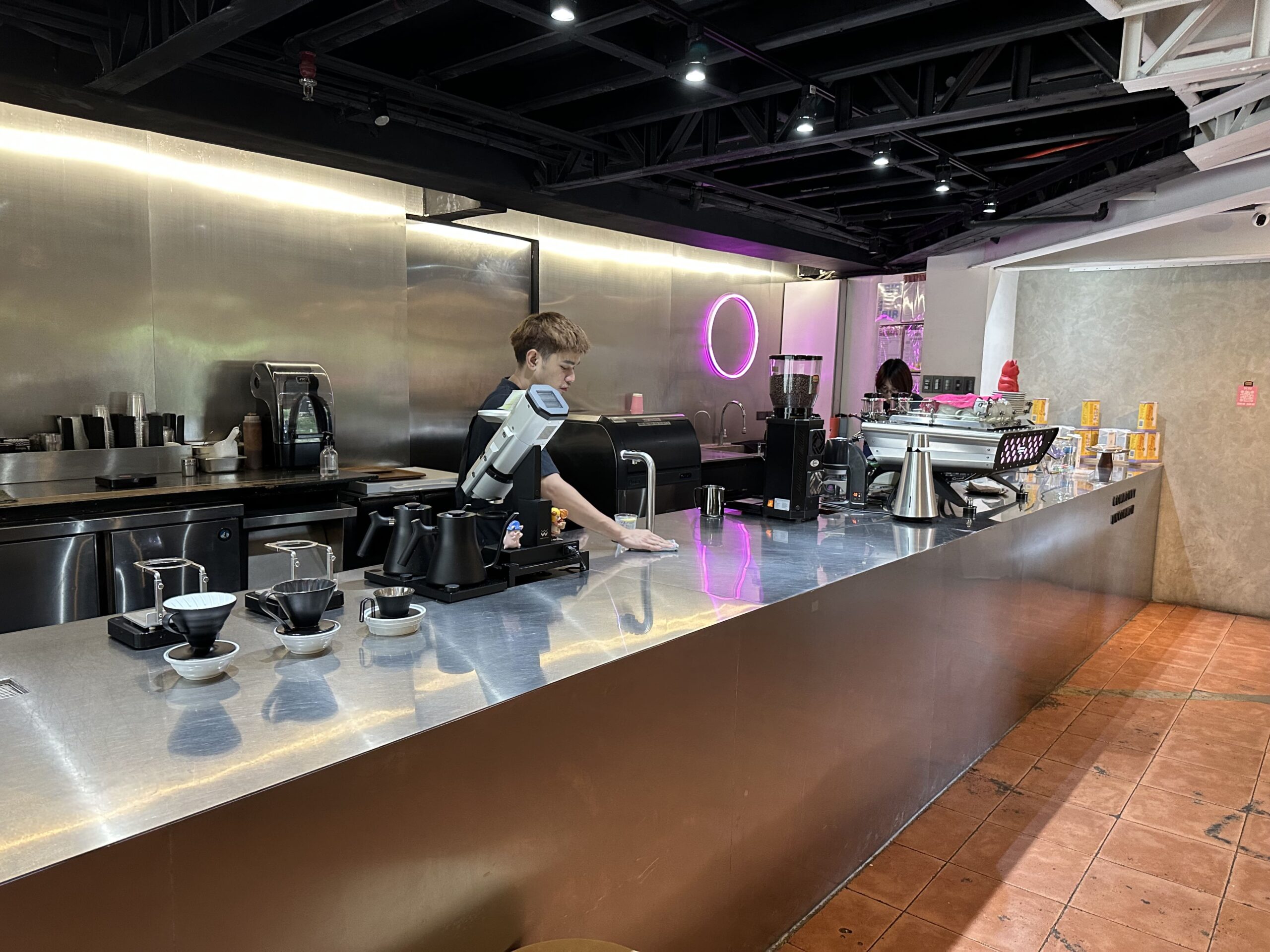
The inviting café interiors of Commonly Uncommon

Latte and espresso
Taking a different route to avoid a flash flood, we dashed out of the car into the warmth of Commonly Uncommon at Crossroads. Don’t let this non-descript, industrial vibe fool you; this java joint knows its craft. Commonly Uncommon uses single-origin beans and, like most cafes these days, also offers coffee alternatives. They are unpretentious and bent on giving the customers the specialty coffee they want, sans judgment. If you prefer oak milk or sugar or enjoy iced drinks, you get what you want. Hence, you will see diverse patronage, from those armed with laptops and headphones to office peeps grabbing a quick caffeine fix to ladies who have lunch and everyone in between.
Plus, they are the only café that thinks of customers battling hyperacidity by offering antacid sachets, which we availed before contemplating our orders.
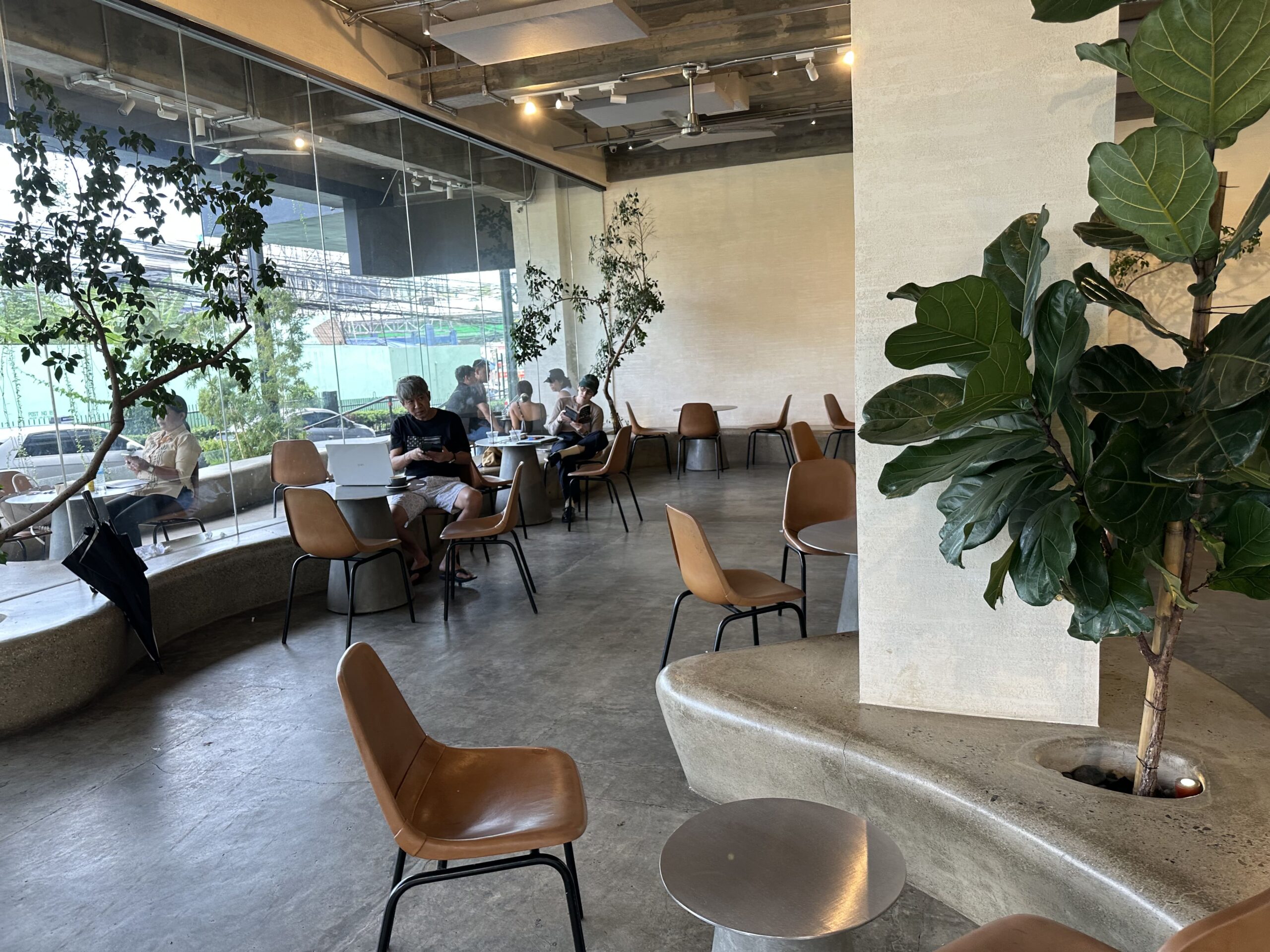
Tightrope’s laid-back interiors, designed for comfort and creativity
Our caffeine-fueled afternoon’s final stop was Tightrope in the former Henry Hotel. Tightrope is the largest of the three we visited, with the same industrial vibe that is very common these days, and tattooed baristas. Large windows ensure that it is always bright, and this is where you will certainly run into someone you know.
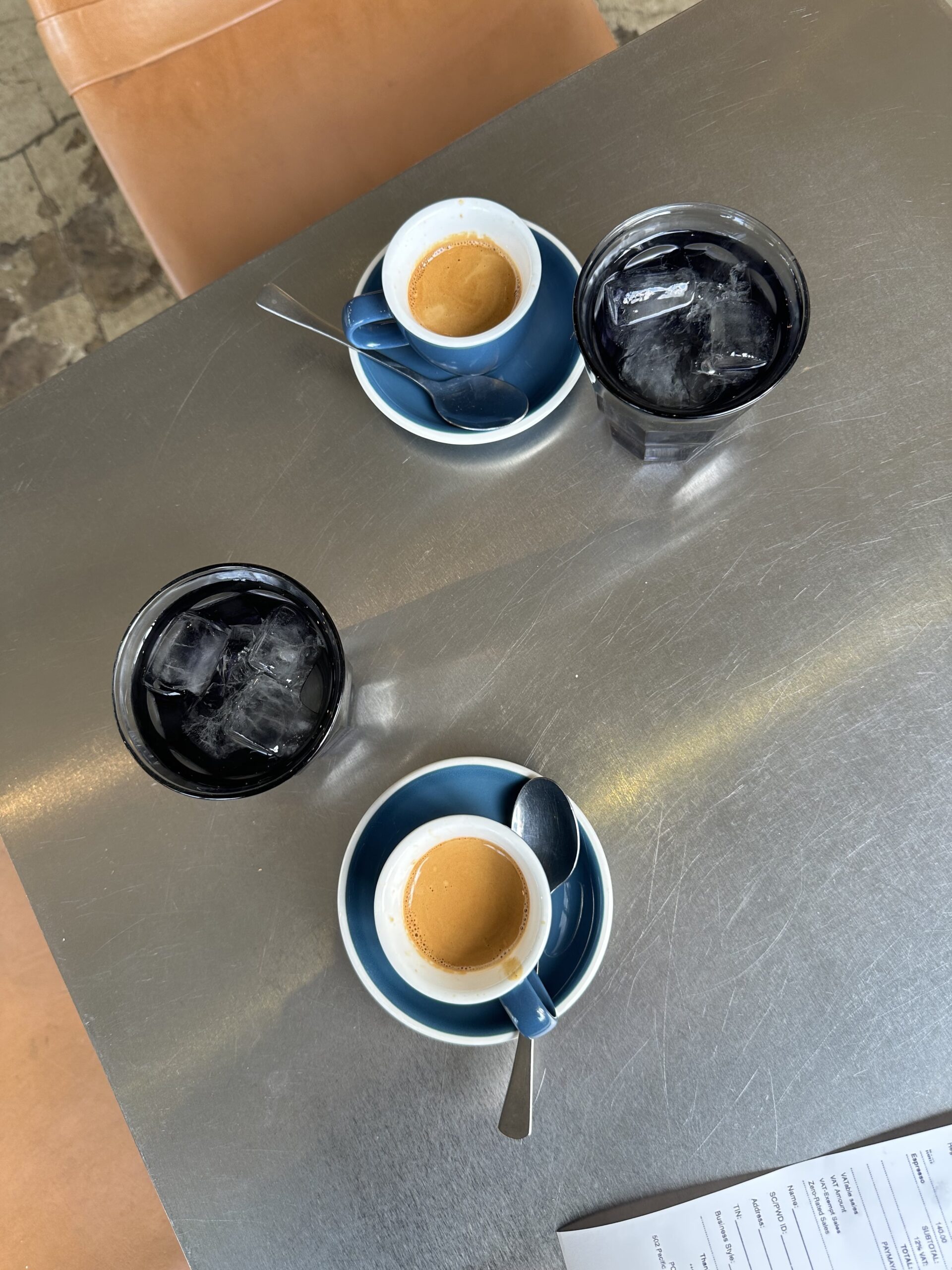
A bold and aromatic espresso shot, ready to awaken the senses.
As this was our third stop, and yes, we were ready to run a marathon after, as we were so pumped, we decided to stick to the classics and have an espresso because you can always taste the quality of a coffee in an espresso. Tightrope has a delicious burnt Basque cheesecake that can be shared, so you can also share the calories. Winding up a well-spent rainy afternoon with great coffee and gossip, we liked all three coffee shops, but Uncommonly Common really stood out.
-

 Style2 months ago
Style2 months agoHappy Melendres Traipsing Around Manhattan in Non-Stop Armani
-

 Arts & Culture2 months ago
Arts & Culture2 months agoKultura. Kapital. Kasalukuyan: Art that Speaks of Today
-
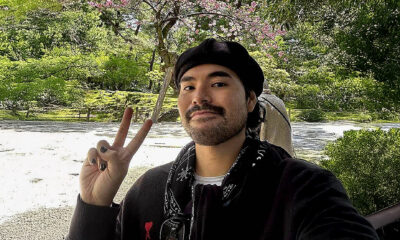
 Prime Target1 month ago
Prime Target1 month agoMiko Sarmiento: Turning Silk Scarves Into Works of Art
-
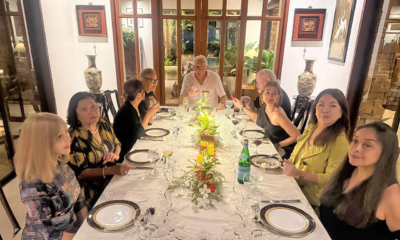
 The Scene2 months ago
The Scene2 months agoAnother Elegant Dinner at Chez Marguerite
-

 Arts & Culture2 weeks ago
Arts & Culture2 weeks agoVisayas Art Fair Year 5: Infinite Perspectives, Unbound Creativity
-

 Prime Target2 months ago
Prime Target2 months agoLuna Vdl–Endless Summers in Siargao
-

 The Scene2 months ago
The Scene2 months agoA Stylish Soirée: Cebu’s Elite Celebrate Jackie Deen Lotzoff at Mad Thai
-

 QuickFx2 months ago
QuickFx2 months agoI Lost It at the Movies: Five of the Most Significant Films of the 1960s






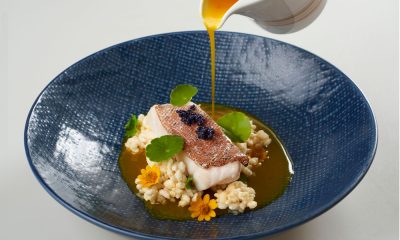

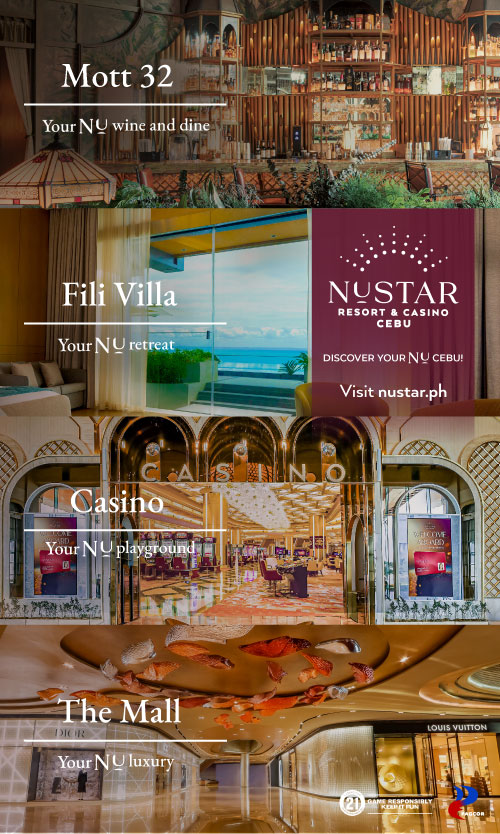







You must be logged in to post a comment Login